
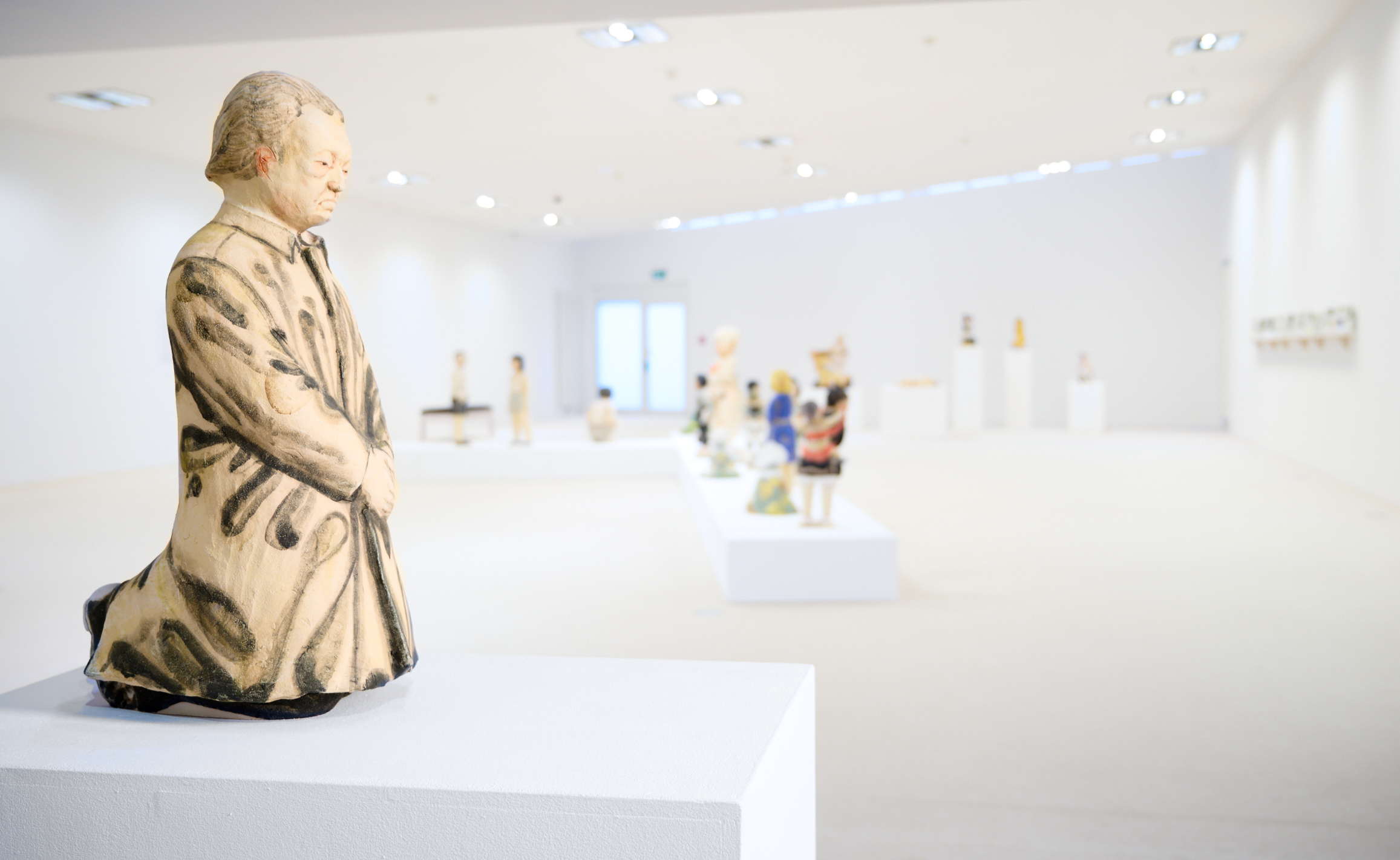

Weighted with sorrow, a diminutive ceramic figure of the German Chancellor Willy Brandt kneels on a plinth, hands stacked and head tilted down. His eyes are swollen, and furrowed frown lines are etched with creases, echoing in the graphic folds on his coat. Referencing a significant moment in 1970 when Brandt knelt before a memorial honoring the Warsaw Ghetto Uprising against the Nazis, the exhibition marks the first time it has been shown in Germany.
Backdropping the woeful Brandt are three Sumi-ink paintings depicting Japanese company bosses amidst a public apology. Although the works from the Apologies/Remorse series are the first to greet visitors, ironically, they were the last pieces that ceramicist Akio Takamori produced before surrendering to cancer in 2017.
His final works are a departure from his customary whimsical tone. For decades, Takamori—with his incisive, child-like curious eye and sociologic lens—studied, documented, and captured human behavior, transmuting their essence and eccentricities into puffy stoneware forms.

His charming figures are standing, lying, and squatting on a low and long perpendicular plinth, which divides the negative space of the gallery with bursts of hues, lively lines, and sensuous undulating forms. A woman, draped in a watery cadmium gown with blushed rouge cheeks, reclines on the floor with her heavy head resting on her hand. Another woman, adorned in a robe with blue stripes accentuating her curves, peacefully sleeps with her naked infant tenderly nestled on her breast. Meanwhile, a drifting man, with expressive eyes, clad only in a white tank top and briefs, carries a child on his back. Despite portraying routine scenes, the peculiar blend of awkwardness and sensuality introduce a fresh and uplifting perspective to these everyday acts.
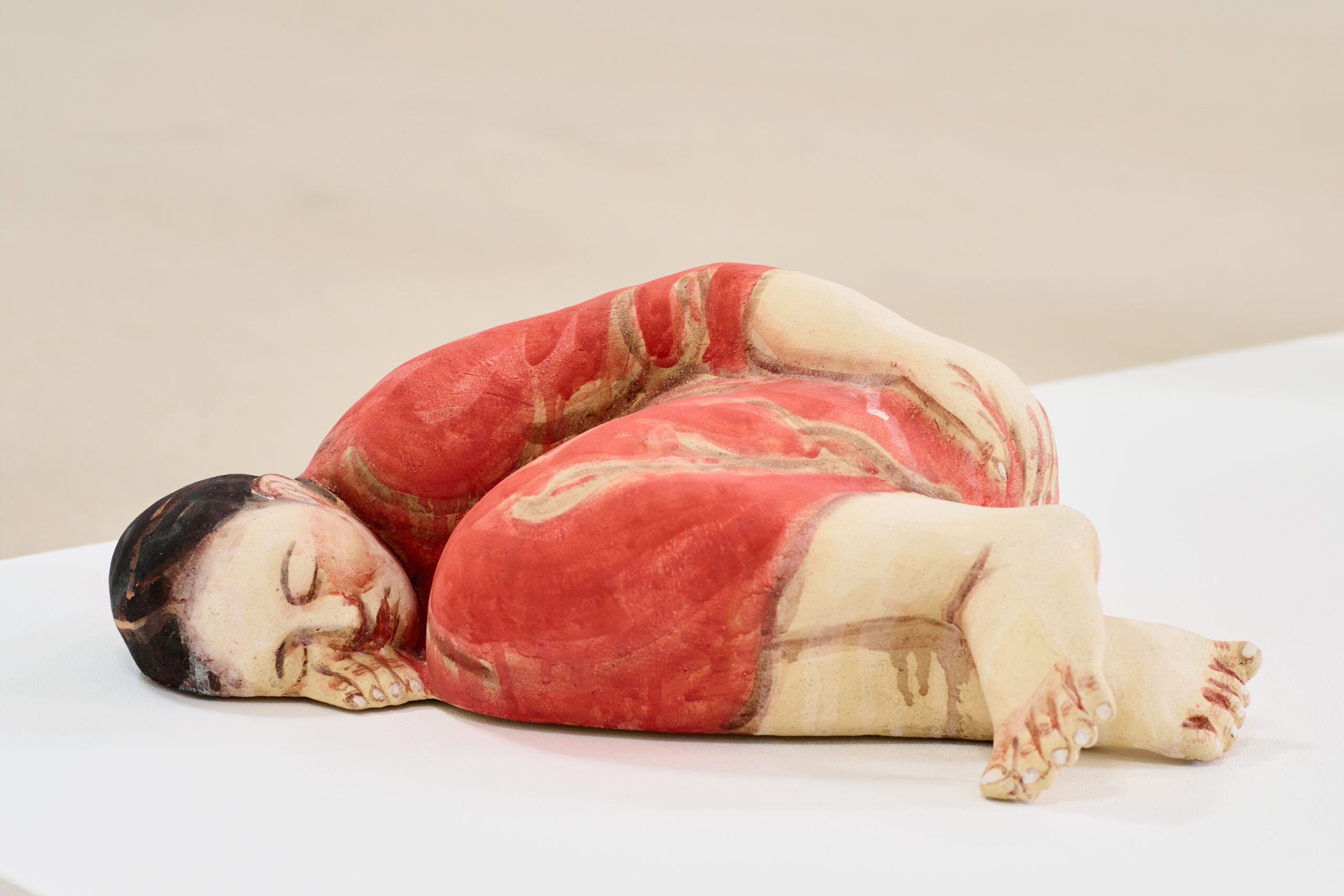
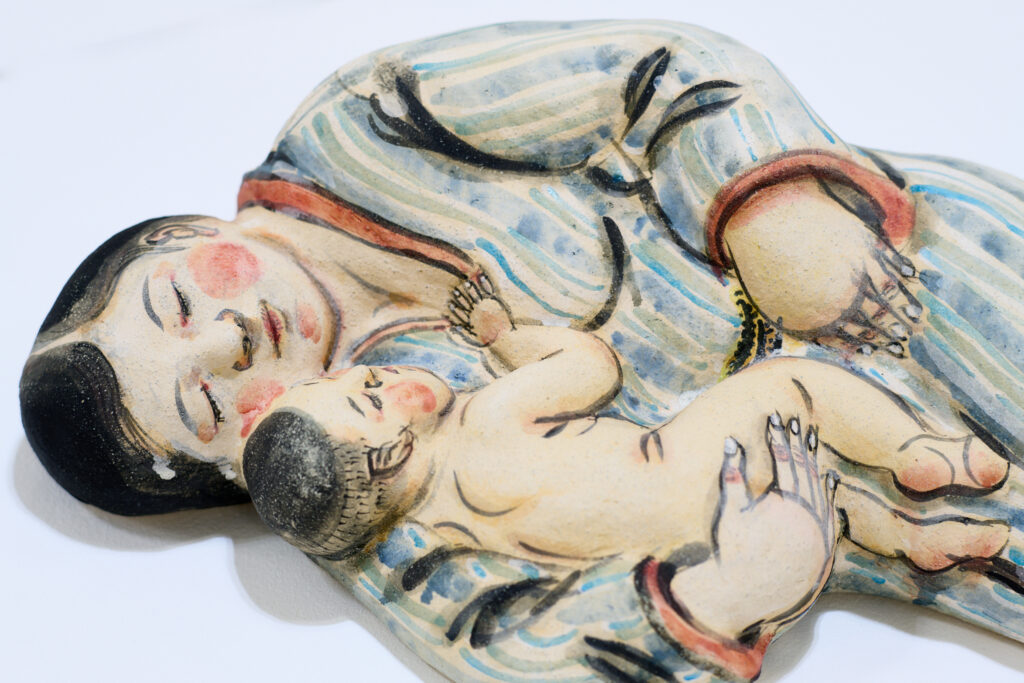

Presenting thirty-nine ceramic sculptures spanning various periods of the artist’s career, the exhibition titled Rücksicht, which is dually defined as “consideration” and “retrospective,” encapsulate Takamori’s inquisitive imagination and examination of human behavior, psychology, and nature.
“When you consider something, you try to understand it.” Dr. Nele van Wieringen, director of the museum and curator of the show explains, “You try to go to the background and go deeper than just surface. You have to bring in a lot of different variables to get a fuller understanding.”
It wasn’t until Takamori, born in Nobeoka, Miyazaki in 1950, moved to the United States that he began to delve deeply into expressions of the human form. During a two-year apprenticeship at Koishiwara Pottery in Japan, where Takamori threw two hundred cups a day, acclaimed American ceramist Ken Ferguson visited the studio, and the two instantly formed a bond. Subsequently, Takamori migrated to Kansas City in 1974, where he studied ceramics under Ferguson's guidance at the Kansas City Art Institute.

Upon arriving in the West, he experienced culture shock, finding himself as a minority in a foreign land. This environmental shift catalyzed a self-conscious examination of the tensions between cultural and racial identities. He began considering how Asians were perceived and how he, in turn, appeared to Westerners. This introspection prompted his pursuit of creating clay figures sculpted from his memories of people in Japan and their collective observable idiosyncrasies as exemplified by the woman in a deep squat with her soles flat on the floor facing forward (a pose often associated with Asian mannerisms and stereotypes).
Takamori also explored the dichotomy between the East and West, drawing inspiration from both traditional Japanese and European masters. Against stoneware mountain landscapes with billowing clouds, a Japanese woman carrying a child on her back faces a white, blonde woman in a royal blue dress. Though both women stand in the same position with hands held in front, they emit distinctly different energies. The curation explores the complexity of identity and reveals how racial and cultural distinctions subtly shape the viewer's perception and interpretation of their narratives.

Takamori's personal life intersected with this dichotomy, as he was married to a Swedish woman—a dynamic reflected in his Interracial Couples series. In these sculptures, nude couples of diverse ethnicities intimately embrace and hold each other, composing a singular mass with shared brushstrokes and drips.
Rather than the repetitive task of throwing hundreds of small cups, as he did during his apprenticeship, Takamori dedicated his days to obsessively sculpting hand-built figures. This shift in focus ultimately led to the development of his distinctive and singular style.
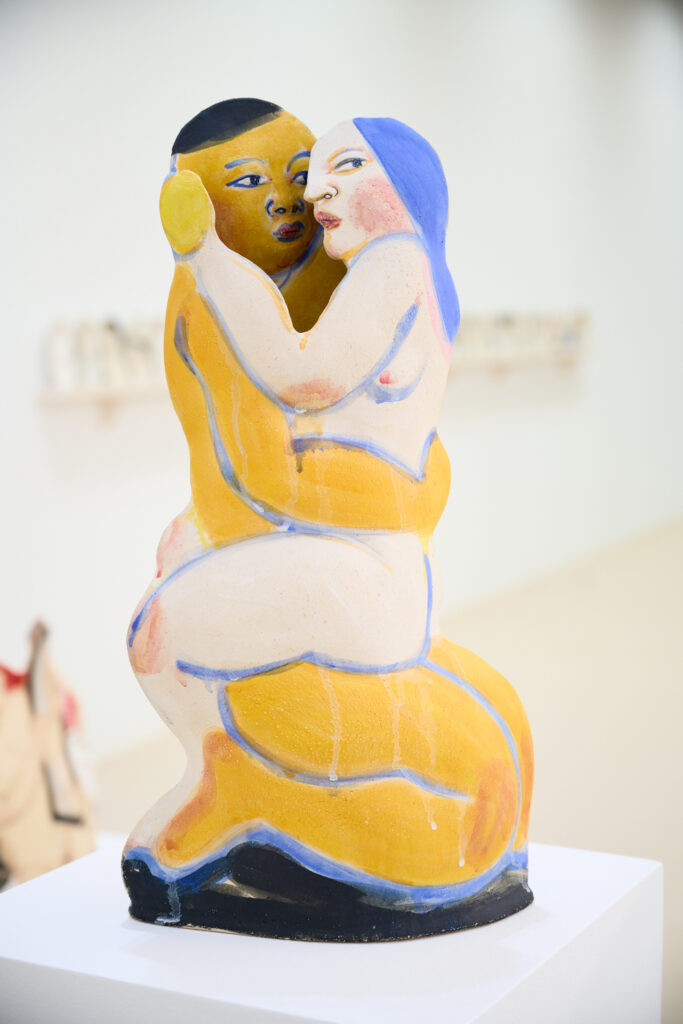
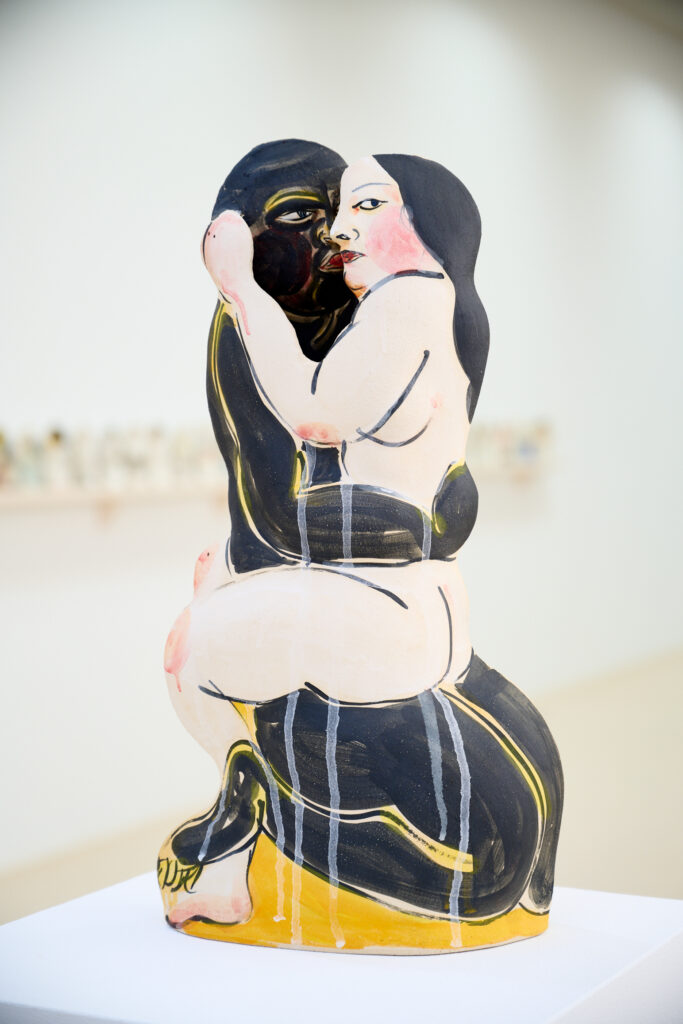
Akio Takamori's aesthetic features undulating, soft, and dense figures characterized by hyperbolized hands and feet, as well as supple thighs and arms, which dramatize the characters with Rubenesque abstractions. The exaggerated physiognomy is further emphasized by calligraphic strokes of lines, creases, contours, and stripes that meander throughout the frame, bringing volume to the form. His works possess a distinctly Japanese sensibility reminiscent of ukiyo-e prints, yet they also draw inspiration from Greek Kouros and Renaissance sculptures. The soupçon splashes of rose-stained cheeks, knuckles, and knees infuse warmth and vitality into his figures, evoking a sense of pulsating life within their voluptuous bodies.

Youthful energy emanates from Takamori’s sculptures, accentuated by his inclusion and admiration for children. Running along the back wall of the gallery, a series of painted children sheltered in cocoon-shaped porcelain plates serve as an homage to the innocence and promise they embody.
“Children, especially infants, catch my attention. My heart grows tender with the sight of innocence and novice. I wonder what this brilliant, totally observant mind is looking at, thinking, experiencing, and taking in from our current world.” - Akio Takamori (CNAA)
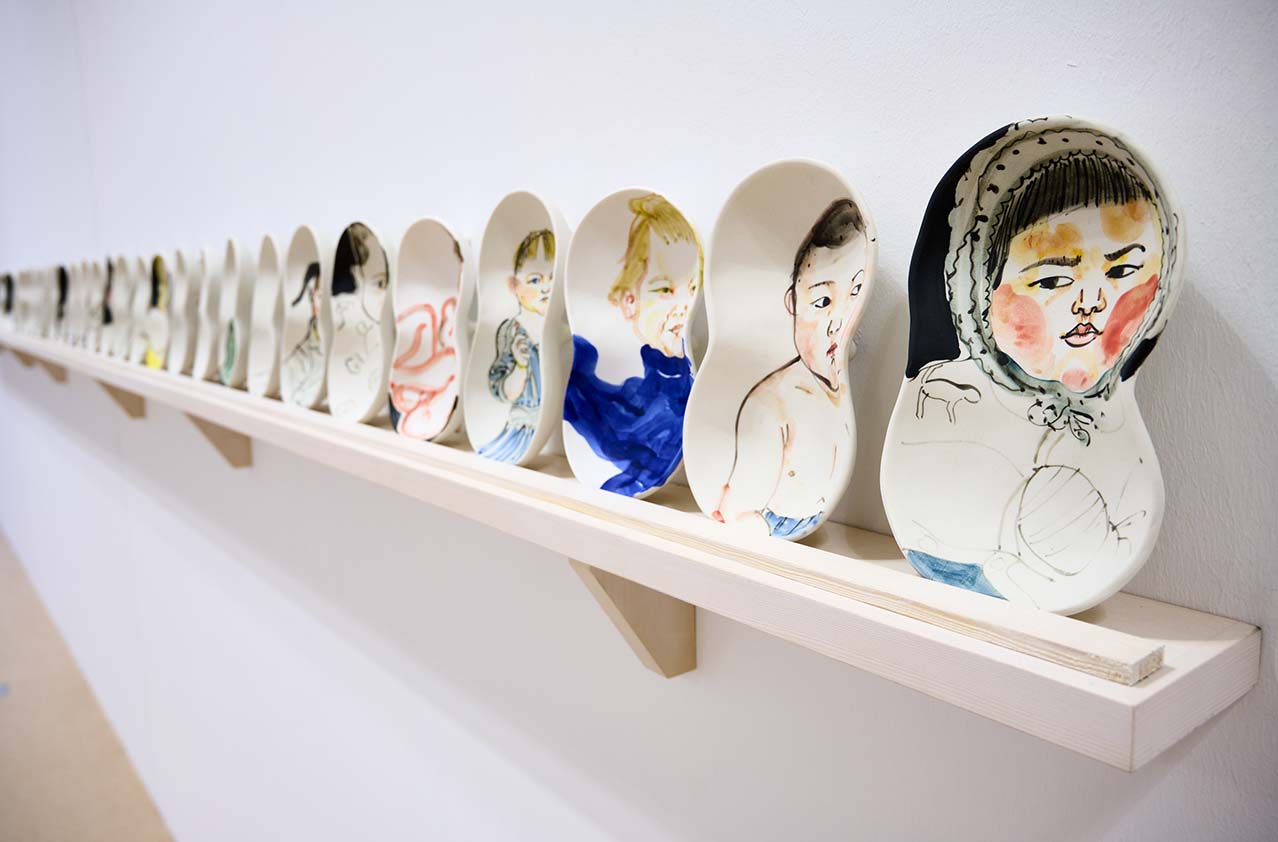
This remarkable gathering of Takamori’s personal yet universal expressions serves as a psychological realm for contemplating humanity in an increasingly polarized world–a poignant reminder of the transient nature of time. Although Takamori is no longer with us, his subtle evocations of powerful emotions will continue to resonate, prompting viewers to reflect on the enduring beauty in human interactions, relationships, and expressions.
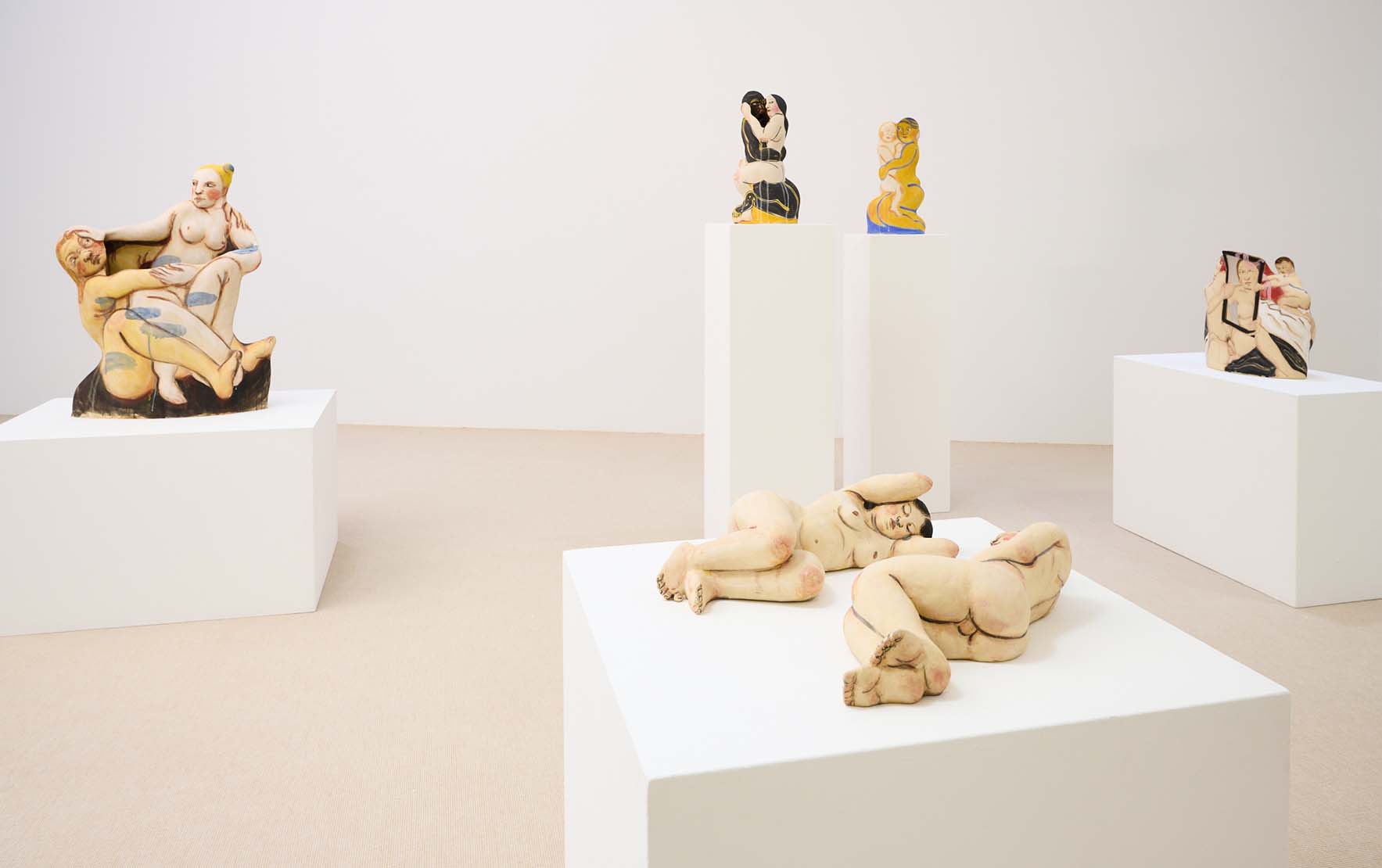
Visit Keramikmuseum Westerwald at Lindenstraße 13 D - 56203 Höhr-Grenzhausen, or explore and learn more about the exhibition "Rücksicht" and Akio Takamori's works online at Keramikmuseum Westerwald.
UPCOMING EXHIBITION AT KERAMIKMUSEUM WESTERWALD
April 7- June 23, 2024
40 years ago, the West German members of the Académie Internationale de la Céramique (AIC) joined forces to strengthen ceramics as an independent art form in Germany and to promote young talent. However, a unified artistic position was never their goal. Nevertheless, shared values are visible that create a common framework. United, they are committed to clay as a material in very different ways. The love and life for ceramics are the cement that unites a number of individualists into a group.
The history of Gruppe 83 reflects the development of artistic ceramics over the last 50 years. The eighties were full of impulses for West German ceramics. Last but not least, the Westerwald Ceramics Museum was built in 1982. Members of the group have always been welcome guests and have participated in many exhibitions in our museum. After reunification, East German positions represented a great enrichment and logical extension of the friendly network.
It is therefore not only pleasing, but also logical to present this important association again in its anniversary year. The exhibition shows selected pieces that react to each other in their diversity and thus express the diversity of ceramics in a special way.
